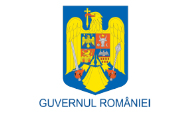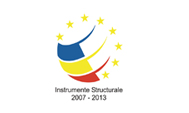|
76NEWS on 2014-02-25 04:23:29Project Endedby marina |
|
|
|
|
|
Welcome !
|
  
|
You are visitor no. 147180 since 10/14/2010 Visitors Online: 1 Members Online: 0
Page updated:
|
CYBERDYN
Cyberinfrastructure for Geodynamic Studies Related to the Vrancea Seismogenic Zone
| JUSTIFICATION
Today's scientists need access to new information technology capabilities, able to perform high-resolution complex computing simulations in a reasonable time frame. Sophisticated simulation tools allow us to study phenomena that can never be observed or replicated by standard laboratory experiments. Modeling complex natural processes in general, and numerical computation in particular, represents today a essential need of research, and all modern research centers benefit from a computing center of one form or another (i.e. Computational Geodynamics Laboratory, CGEO, UNAM, Mexico: www.geociencias.unam.mx/geodinamica; Computational Infrastructure for Geodynamics at CalTech, USA: http://www.geodynamics.org/cig). The combined power of hardware and sophisticated software, visualization tools, and scientific applications produced and used by interdisciplinary research teams make possible nowadays to advance the frontiers of science and to pose new key scientific questions.
Cyberinfrastructure integrates hardware for high speed computing, a collection of highly specialized software and tools, and a powerful visualization tool. Interdisciplinary teams and cyberinfrastructure professionals are fundamental to make use of the full power of cyberinfrastructure in order to create, disseminate, and preserve scientific data, information, and knowledge. A new interdisciplinary research domain is emerging at the interface of geosciences and computing with essential inputs from geology and geophysics. This field of research, which is known as computational geodynamics, is addressing issues that may expand our scientific knowledge on the origin and behavior of seismogenic areas, as Vrancea.
A high-performance computer/visualization cluster (HPCC/HPVC) is a group of interconnected servers, working together closely and forming a single supercomputer. HPC(V)C systems are deployed to improve performance over that provided by a single computer, while typically being much more cost-effective than single computers of comparable speed. The components of a HPC(V)C are connected to each other through fast local area network. A single compute job requires frequent communication among computing nodes, implying that the HPC(V)C system shares a dedicated network, is densely located, and has homogenous nodes. Middleware such as open source MPI (Message Passing Interface) permits compute clustering programs to be portable to a wide variety of clusters. In geodynamic simulation of tectonic processes, we work with domain decomposition (Fig. 1), where each side of the 3D computational domain has a number of processors assigned.

Figure 1. Domain decomposition in a typical 3D regional domain. A single model with 8x8x8 processors in each direction would require a total of 512 processors.
For example if we assign 8 processors in latitude direction, 8 processors in longitude direction and 8 processors in depth, we will need 8x8x8=512 processors in order to perform a single simulation. This is a significant processing power and can be achieved only using a HPCC system. Also, for fluid mechanics problems (i.e. mantle convection) there is a large amount of data communication between the computing servers, and therefore a high speed interconnect is required (i.e. 10 GigE, Infiniband or Myrinet). Terrascale machines (HPCC systems with over 1000 processors) open the possibility of exploring geodynamic phenomena over a more wide range of spatial and temporal scales. Approaching realistic conditions and parameters in geodynamic computations is linked to broadening the range of spatial and temporal scales that a model simulates, as well as incorporating physical and chemical processes over each of these scales. Open source geodynamical specialized software, that scales well on HPCC with 100s processors, is now available thanks to several important scientific initiatives (i.e. www.geodyanmics.org). Also, general finite element packages (i.e. www.pde2d.com) are multiprocessor capable. Therefore we are in an excellent time-position to request funding for this proposal since the gap between technology and software in the field of computational geodynamics has narrowed so much.
The achievement of the first cyberinfrastructure related to geodynamics in Romania will be mainly used to answer key questions related with the origin and time-space evolution of the Vrancea seismogenic zone. The proposed research intended to implement such a structure is necessary and timely for several reasons:
1/ Large amounts of data have been gathered over the last decades or so through several national and international projects in the Vrancea area.
2/ Different research groups started to propose rather contrasting geodynamic scenarios on the origin of the Vrancea seismogenic zone. Therefore we are in an excellent timeframe to approach these working hypotheses by numerical means. This will help to better understand which are the weak and strong points of each hypothesis.
3/ There is a global trend to have a suitable cyberinfrastructure in research centers oriented toward earth sciences, in particular geodynamics. We propose here to develop for the first time in Romania such infrastructure that will open a new research field and will benefit many generations of young scientists.
|
|
|
|
|
|
|
|





